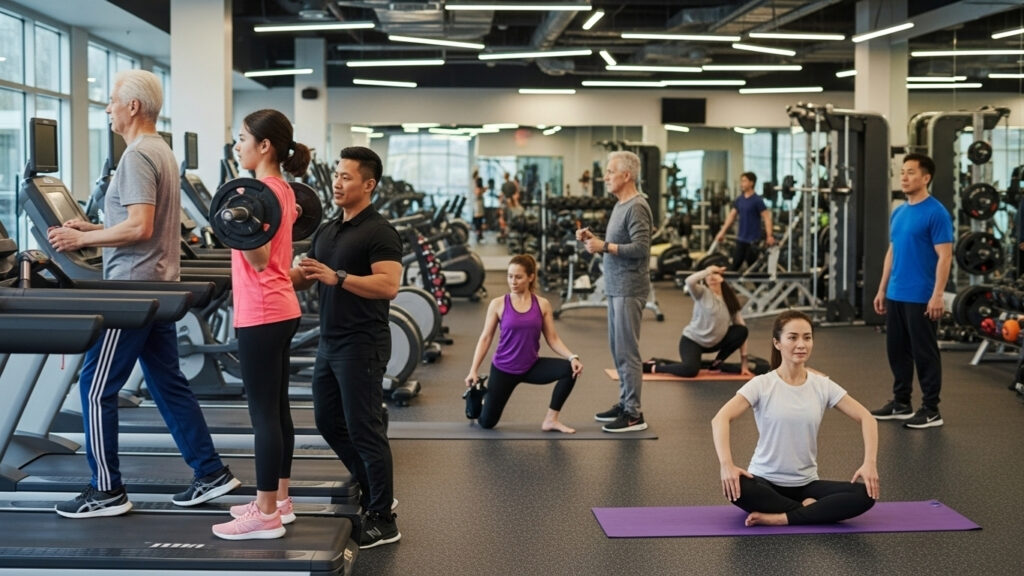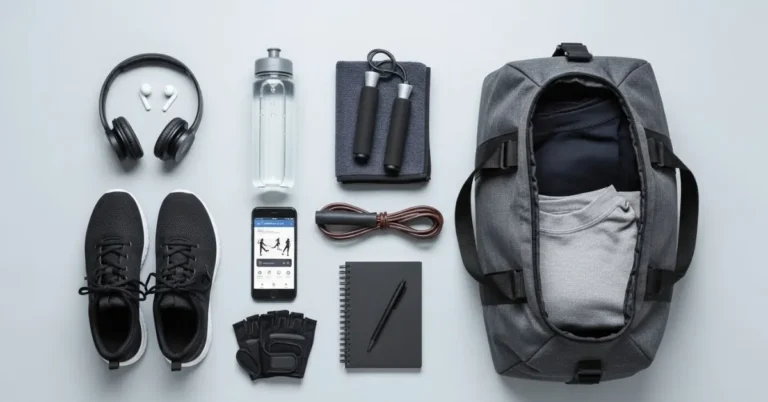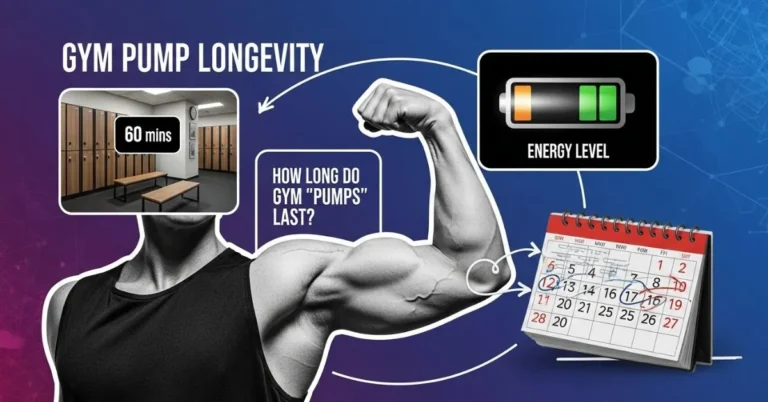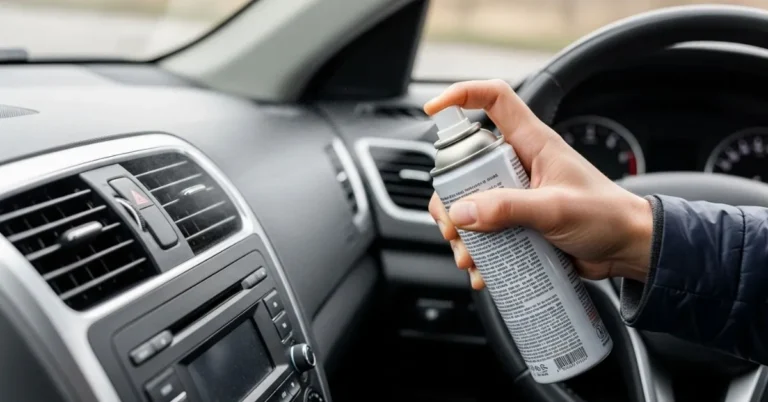It started with a protein shake and a YouTube workout. One morning, my 14-year-old son looked at me and said, “Mom, I want to start lifting.” Pause. Blink. Cue parental panic.

As parents, gym newbies, or even fitness enthusiasts navigating youth fitness, one question always arises: How old do you have to be to go to a gym? And it’s a good one. Because while enthusiasm may come early, gym policies, state laws, and liability waivers don’t constantly flex as easily.
Whether you’re a teen eager to start strength training, a parent concerned about gym safety, or just someone curious about age limits, this guide thoroughly explains them with a wink of wit.
Contents
- 1 So, Really How Old Do You Have to Go to a Gym?
- 2 Age Rules at Major U.S. Gym Chains: A Side-by-Side Look
- 3 State Laws and Legal Factors: What’s in the Fine Print?
- 4 Why Do Gyms Have Age Restrictions Anyway?
- 5 Teen Fitness Is Trending: Welcome to Gen Z Gym Culture
- 6 Affordable Ways for Teens to Start Hitting the Gym
- 7 Budget Tips for Teen Gym Goers:
- 8 Teen Gym Readiness: What to Know Before Stepping Inside
- 9 So, How Old Do You Have to Go to a Gym? Let’s Recap
- 10 FAQs: How Old Do You Have to Go to a Gym?
- 11 Expert Thoughts
- 12 About the Author
So, Really How Old Do You Have to Go to a Gym?
Here’s the short and sweaty answer: Most gyms allow teens to start at age 13, but with supervision. Every gym has a playbook, which often combines corporate policy, franchise decisions, and state liability laws.
Ages to remember:
- 12 and under: Usually not allowed, or permitted only in kid-specific programs
- 13–15: Welcome, with a parent or guardian present
- 16–17: Allowed solo with parental waiver or consent
- 18+: Consider yourself an adult gym rat freedom unlocked!
Still, that’s the general vibe. Read the fine print if you’re serious about starting or enrolling a teen. Or just read below. We did it for you.
Age Rules at Major U.S. Gym Chains: A Side-by-Side Look
How old do you have to be to go to a gym? Depends where you swipe that membership card. Here’s a breakdown of the significant U.S. gym chains and their rules:
Planet Fitness
Known for: Budget memberships, “Judgment-Free Zone,” and purple everything.
- Minimum age: 13
- Ages 13–15: Must be with a parent or legal guardian
- 16–17: May attend solo, but require parental signature on the waiver
- 18+: Full access, no restrictions
Tip: Their High School Summer Pass lets teens 14–19 work out for free each summer (with registration and parental permission). This is a significant win for teen fitness goals!
LA Fitness
Known for: Comprehensive equipment, classes, and pools.
- Minimum age: 13
- Teens aged 13 to 15 are welcome but need a parent or guardian.
- 16–17: Allowed solo with signed waiver
- 18+: Go wild (responsibly)
LA Fitness emphasizes safety and offers youth orientation at some locations, which is excellent for teens new to equipment use.
Anytime Fitness
Known for: 24/7 access, key fob entry, and low-key vibes.
- Minimum age: 13
- 13–17: Must work out with a parent or legal guardian and be included in their membership
- 18+: Standard access
Note: Some locations are independently owned, so that age policies may vary slightly. Always call ahead.
YMCA
Known for: Family-focused, community-driven Fitness.
- Minimum age: Often 10–12 with program restrictions
- Offers teen-specific fitness programs
- Encourages family memberships and group classes
The YMCA is a super teen-friendly option especially for families looking to blend youth fitness with safe, structured routines.
Read More: How Much Does the Bar Weigh at Planet Fitness: Beginners Guide
State Laws and Legal Factors: What’s in the Fine Print?
Let’s not forget the legal stuff. Gyms often design age policies around state-level liability laws and insurance coverage.
For example:
- Some states require parental supervision under 16, regardless of gym policy
- Specific machines (like squat racks or Smith machines) may be off-limits to minors
- Waivers might need to be notarized or co-signed
Your gym might technically say yes but your state law might say “not so fast.” When in doubt, check with a manager or trainer at your local facility.
Why Do Gyms Have Age Restrictions Anyway?
It’s not to be mean, we promise. Age limits exist for reasons like:
- Liability prevention (a.k.a. not wanting to get sued)
- Physical development – younger kids’ joints, muscles, and coordination are still developing
- Machine safety – gym equipment isn’t made for smaller bodies
- Emotional maturity – group settings and shared equipment require etiquette
Teenagers can thrive in the gym but only when set up for safe, supervised success.
Teen Fitness Is Trending: Welcome to Gen Z Gym Culture
Suppose you’ve ever seen a 16-year-old deadlifting twice their weight on TikTok welcome to 2025. Gen Z is taking over gym culture, and they’re not shy about it.
What’s trending?
- Group lifting meetups (yes, even virtual!)
- TikTok challenges like #12-3-30 or #PlankChallenge
- A focus on mental health and movement
- Aesthetic-focused routines: glutes, abs, arms—repeat.
Teens today aren’t just chasing six-packs. They’re after confidence, stress relief, and community. And smart gyms are paying attention.
Affordable Ways for Teens to Start Hitting the Gym
Worried about cost? You’re not alone. Gym memberships can be pricey, especially for families with multiple members. Here are some budget-friendly options:
Budget Tips for Teen Gym Goers:
- Look for student or summer deals
- (e.g., Planet Fitness’s teen pass)
- Explore family memberships
- One monthly fee, multiple users.
- Check local community centers or high schools
- Try at-home workouts first using YouTube or free fitness apps
- Borrow equipment or buy resistance bands to build fundamental strength at home
Soft Promo Tip: For affordable, non-intimidating options, consider downloadable teen workout planners, fitness journals, or online beginner courses.
Teen Gym Readiness: What to Know Before Stepping Inside
Before any teen starts lifting, running, or even hopping on the elliptical, here’s what should happen first:
- Health clearance: Especially important for teens with asthma, injuries, or medical conditions
- Form education: Learning how to use machines prevents injury
- Gym etiquette lessons: Don’t hog equipment, wipe down benches, no gym selfies mid-set
- Structured plan: Random workouts rarely get results plan smart!
Parents can help by encouraging consistency over intensity and making rest days part of the routine.
So, How Old Do You Have to Go to a Gym? Let’s Recap
How old must you be to go to a gym? Here’s your crystal-clear takeaway:
| Age | Gym Access |
| Under 13 | Rarely allowed, kid programs only |
| 13–15 | Allowed with parent or guardian present |
| 16–17 | Allowed solo with waiver |
| 18+ | Full access |
Also remember:
- Check your state laws
- Review gym chain policies
- Always prioritize safety, supervision, and smart goals
Read More: How to Clean Gym Floor Mats Like a Pro: Step-by-Step Guide
FAQs: How Old Do You Have to Go to a Gym?
Q1: Can I bring my 12-year-old to the gym with me?
A: Most gyms do not allow 12-year-olds on workout floors. However, some offer youth programs or supervised play areas.
Q2: Are gyms safe for teens?
A: Absolutely when done right! Teens who follow proper guidance and form can gain confidence, build healthy habits, and avoid injuries.
Q3: Can a 16-year-old work out without a parent?
A: In most gyms, yes with a signed waiver from a parent or guardian.
Q4: Are there age restrictions for specific equipment?
A: Yes. Many gyms restrict free weights and advanced machines for minors unless supervised.
Q5: What’s the best gym for teens starting?
A: The YMCA and Planet Fitness often top the list for affordability, teen programs, and accessibility.
Expert Thoughts
Whether you’re a teen ready to crush your first set or a parent prepared to support a healthy habit, knowing how old you have to go to the gym is your first step in the right direction.
Start smart. Start safe. And most of all start strong.







